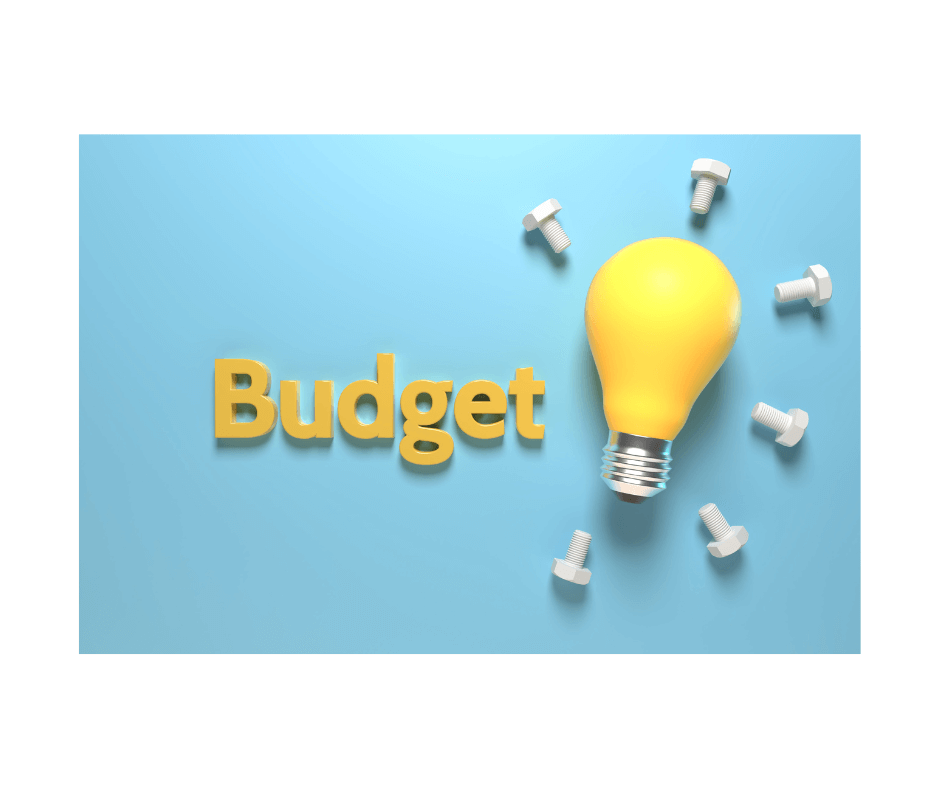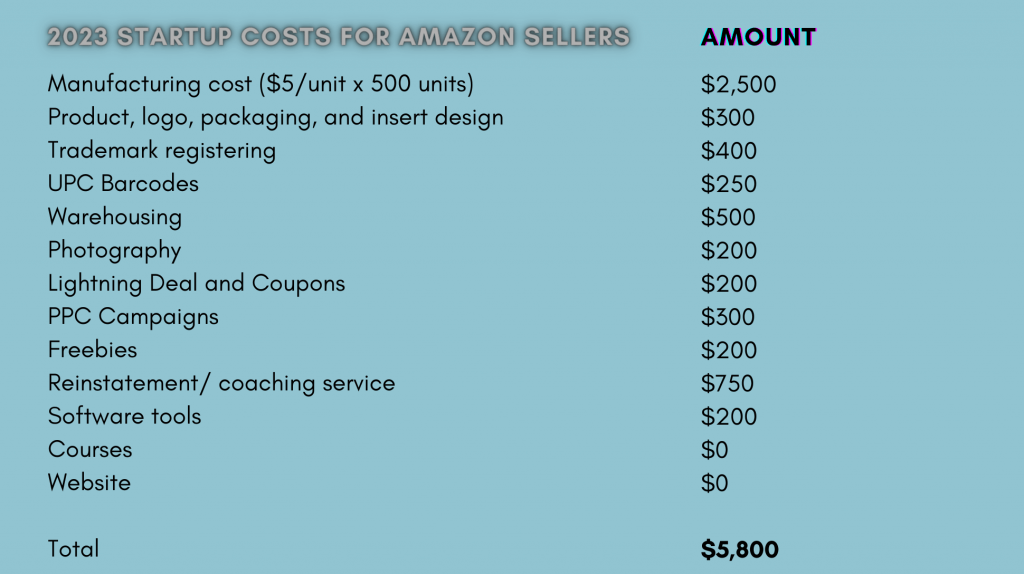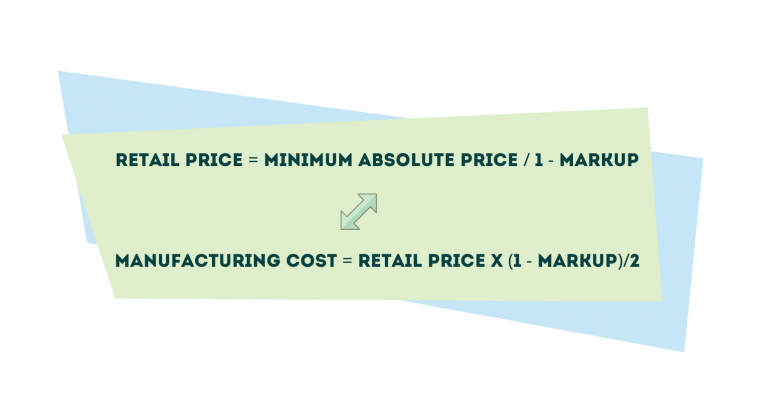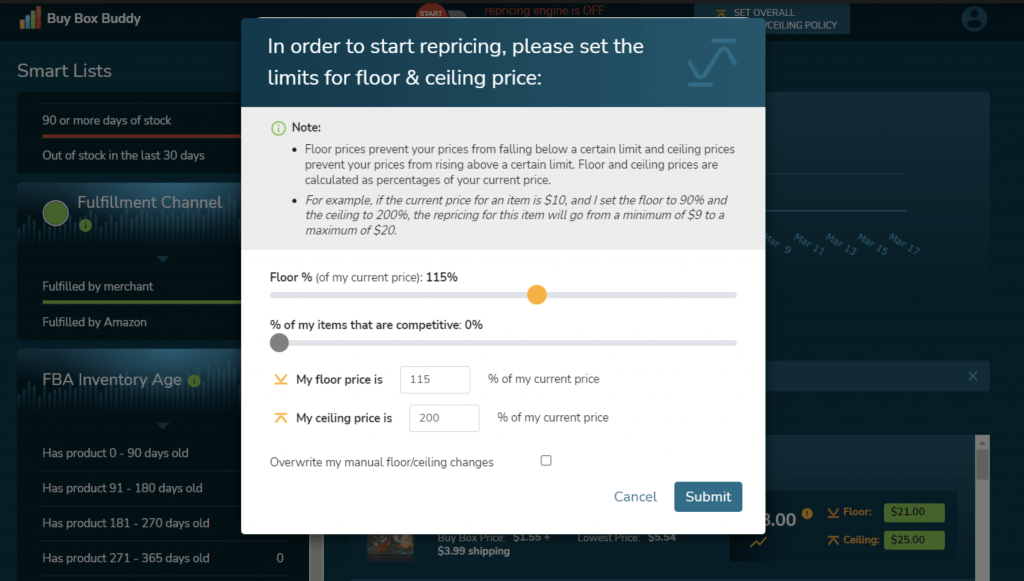Editor’s Note: Originally published on May 21, 2020, updated on Feb. 16, 2023.

If you’re reassessing your priorities, then you might be wondering what it takes to sell on Amazon in 2023. If so, give this a read to see if you can afford it all, including the latest Amazon fees and costs. Find out how to budget for Amazon, and make the most of your investment.
Having covered the topic of account setup in this introductory series for new Amazon sellers, it’s time to get down to brass tacks and find out what it takes to sell on Amazon in 2023. Whether it’s your main source of income or just a side hustle, here’s what you should plan for as you draw up your Amazon budget.
How to Budget for Amazon Sales in 2023
According to Jungle Scout, private labelThis is what you call products manufactu… More sellers should set aside at least $3,750 to start their business on Amazon. Oddly enough, the ones who invest less tend to get into business quicker and last longer. But don’t assume a few hundred dollars will cover your startup costs.
Setting Up Your Amazon Business
Here’s a rough breakdown of the costs sellers might come across when they start selling an item on Amazon. To tighten those purse strings, address each of them and make savvy decisions. Note that we didn’t include conventional startup costs (incorporation, bank setup, realtor fees, etc.).

Software Tools
There’s no shortage of them. Some are versatile and others are highly specialized. Some are free and others are sales-based. But monthly subscriptions usually go into double digits. Here are just some of the types of software tools new sellers should look into before they take on the pros:
- Product scouting apps that check prices, sales ranks, and restrictions (e.g. Profit Bandit).
- Keyword and ASIN research tools like Sonar and Amazon ASIN.
- Inventory managers that show and update listing information (e.g., SellerEngine Plus).
- Email automation tools that build templates (as above).
- FBA shipment managing and label printing tools (ditto).
- Listing builders and optimizers (Listing Builder from Jungle Scout).
- FeedbackA performance rating on a scale of 1 to … More and review tools like Feedback Express.
- Automated repricers (BuyBoxBuddy reprices in real time and based on real costs).
- CampaignSellers and vendors have a variety of ad… More launchers and advertisers (e.g., Sellics).
- Sales tracker tools (Sales Analytics from Jungle Scout).
Sellers today use a variety of tools to keep their edge. So, costs can soar to three-digit figures quickly. Use free trials to compare and choose tools that match your product, sales volume, and budget. Be sure to check for these three major vulnerabilities:
Time lag. This is how long it takes the tool to update your listing data (e.g. price, condition note, etc.). BuyBoxBuddy, our automated repricer, updates listings in real time. This gives you precious minutes to reach customers before competitors update their prices.
Lack of accuracy. You need up-to-the-minute data. You also need the full picture. But many sellers can’t offer thay. Some won’t even acknowledge the two Buy Boxes (one New and one for Used items). With BuyBoxBuddy, you see every Buy BoxThis refers to the situation where a sel… More, along with the exact selling price in real time.
Violations. Some tools may violate selling policies. For example, there are tools that enable you to only send feedback requests to buyers who are likely to be satisfied.
Designing the Product
You can’t put a price on a professional designer’s contribution. But if you must look at it from a cost perspective, expect to pay several hundred dollars. This will probably include the design of your product, logo, packaging, inserts, and some tweaks to your listing page.
Manufacturing or Sourcing Your Item
Since Nielsen claims Private LabelThis is what you call products manufactu… More accounts for 19% of consumer packaged goods (GPG) sales across the globe, it’s safe to assume that many of our readers are PL enthusiasts. But if you don’t manufacture the products yourself or through a PL supplier, then skip this part.

According to Statista, about half of private labelThis is what you call products manufactu… More products on Amazon sell for under $20. The rest usually sell for $20-$50. If you plan to price your product just over $20, then your landed cost should be no more than a fifth of that ($4). Here’s why:
As you’d expect, the bulk of a seller’s initial investment goes into manufacturing or sourcing. Sellers refer to it as ‘landed cost’. This includes the cost of materials, labor, delivery to the warehouse, customs, and other costs.
Then, using the keystone pricing formula, most retailers double this manufacturing cost and get the wholesale price (a.k.a. absolute minimum price). That way, their profit margin per sale will be at least 50% no matter what. This should cover warehousing, administrative expenses, and Amazon fees.
Also, retailers usually expect a markup of about 60% (or 40% if they sell apparel), according to Shopify. So, an item that costs $5/unit to manufacture or source has an absolute minimum selling price of $10. Using the formula below, for a 60% markup, the full retail price becomes $25.

So, roughly speaking, if you want to sell a product on Amazon and keep 60% of the revenue, you should try to pay no more than one fifth of the selling price to make or source it (i.e., make it for $6 and sell it for $30). With BuyBoxBuddy, you can make sure that you never sell for anything less by setting your floor price.

Branding Your Products
It’s not enough to look up and find a phrase on the Shopify brand name generator. To take advantage of the safeguards Amazon has in place for brand owners, you should first register your trademark with the USPTO (or EUIPO in Europe). Then you can apply to be on the Brand Registry for free.
This will take several months and cost up to $400 if you go through a local Intellectual Property attorney. But if you sign up to Amazon’s IP Accelerator Program, you could be looking at upwards of $2,400 for brand review and trademark application. Please read up on the basics of IP registration and infringement.
Buying UPC Barcodes
Buying cheap barcodes from resellers isn’t an option anymore. As of 2016, Amazon checks that all items have valid UPC Barcodes that match the manufacturer’s identifiers. So, be sure to buy from GS1. Prices start from $250 per unique product, for 1-10 items. Note that there’s a yearly renewal fee also.
Some product categories, such as bundles and some media items, are exempt. But only if brand owners apply to Brand Registry and ask for their GCID (Global Catalog Identifier). If you’ve already bought your GTINs, use the official online search tool to check that it’s valid.
Storing Your Inventory
Even if Amazon handles order fulfillment for you, you should still factor in warehousing costs. Some labor, equipment, depreciation, overheads, IT, admin, and storage space costs will still apply. Whether you process every order or only shipments to and from Amazon fulfillment centers, you’ll pay for storage.
Prologis gives us a figure of $1.1/ sq. ft. /month for a 5,000 square foot warehouse, excluding utilities. But warehousing companies charge 7 times that, according to this survey. So, you’re better off with a makeshift office for now. Add a few hundred dollars per month to the tally for pick-and-pack and overheads on a handful of sales per day.
Photography
Virtually anyone can put together a makeshift photo studio (or buy one for $200) and snap 9 product images for an Amazon listing. But there are a few basic image requirements sellers should know before they take the snaps. And we also have some lesser known rules.
If you’re not happy with your product images, there’s no shortage of specialized product photography services for Amazon sellers. Charges start at $25/image for large orders, but most sellers pay double that. So, you should set aside $300-$400 for images alone.
But if your item is already in Amazon’s warehouse and you’re just not happy with the quality of your images, you could also give the Amazon Imaging Service a go. For $50 to $150, you get at least 2 compliant images. Note: Amazon owns the source files and you need permission to make any changes.
Advertising
Once the listing goes live, you’ll be dying to promote it. But don’t rush into bidding for clicks. On Amazon, advertising costs can spiral out of control fast. Instead, set up an initial budget of a few hundred dollars for Lightning Deals and Coupons. As sales pick up, set aside another $300/month for sponsored ads.
Alternatively, you could also try the new Amazon Posts tool for free. It lets you create your own Instagram-like brand feed with custom text and images for mobile devices. Adlucent and Macarta have more information to share on the topic.
Freebies
Amazon’s Early Reviewer Program is currently closed. So, you can’t get 1-5 reviews from vetted reviewers for $60 per SKU. But Amazon’s Vine program may let you enroll for free and give away products to vetted reviewers. Be sure to apply to Brand RegistryAmazon Brand Registry is a tool that ena… More and have at least one ‘New’ FBA unit in stock and less than 30 product reviews.
Meanwhile, offer a few units to influencers, reviewers, and friends of friends. But make sure to follow Amazon’s strict guidelines and policy on reviews. Factor in the manufacturing cost of these units, as well as any membership fees, trade show fees, or travel costs for distributing these freebies.
Account Services
Continuity is very important to Amazon sellers. Suspended listings and selling rights will throw a wrench in the works. Whenever you appeal a decision, you can expect not only a demand for a Plan of Action, but also delayed disbursements and withheld funds.
Coaching, listing reinstatement, account rescue, and store monitoring are just some of the services you can outsource when you need to deal with an account issue. They don’t come cheap, so be sure to set aside a few hundreds of dollars as your sales start to pick up.
Workshops and Courses
As a new seller, you have your work cut out for you. But don’t assume that expensive training courses will pay off. Ignore the hype around ‘Amazon experts’ for now. You don’t need them when you start out. Especially not when you have countless free resources like Seller University.
Creating Your Website
Now is not the time to invest in a new website. Instead, put all your resources into your Amazon sales. Then, as you build up a reputation on Amazon, you can drive sales to your website organically or even sell on multiple platforms with Multi-Channel Fulfillment.
As you can tell, it costs more to sell on Amazon in 2023 than it did in the past, so it’s worth drawing up a robust and realistic start-up budget for Amazon. To cover all the bases, follow this blog for more budgeting advice from the “How to Sell on Amazon in 2023” series. We’ll soon be revealing how your choice of fulfillment channel affects your Amazon fees, costs, and profits.

Melanie takes an active interest in all things Amazon. She keeps an eye on the latest developments and keeps Amazon sellers up to speed.






2 Responses
I found your explanation to be well done. I would greatly appreciate receiving comprehensive lecture notes on various topics, such as supply chain management (SCM), inventory management, logistics, and analytics in supply chain management.
Thank you for sharing such an informative and well-structured blog post. The content was organized in a way that made it easy to navigate and find specific information.